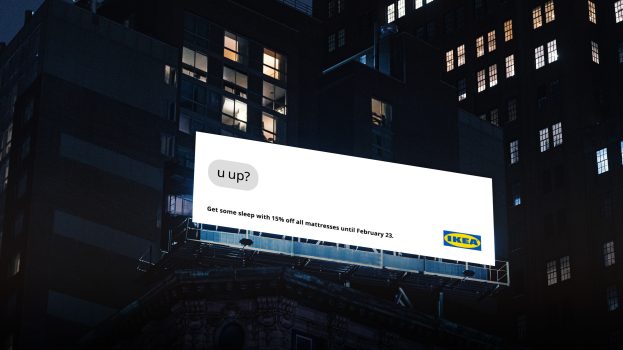Camp Okutta isn’t your average summer camp.
The latest campaign from Toronto-based War Child Canada is based on the idea of a faux camp that teaches kids how to throw grenades and shoot to kill. The 30-second TV spot features an affable-looking counsellor touting the camp’s training program. It ends with the message: ‘It doesn’t exist here. But it does all over the world. War is no place for a child.’
‘There is an undercurrent of awareness [about child soldiers], but the feeling was that it just wasn’t hitting home,’ explains Angus Tucker, co-CD at Toronto-based John St. Tucker adds that the campaign targets a broader, older audience than War Child reaches through its partnership with MuchMusic and musicians like Avril Lavigne. ‘We wanted to appeal to adults. The secondary target is 18 to 25, who would ultimately be the activists.’
The campaign includes teaser posters for the faux camp (which don’t give away that it’s fake), an informational brochure about child soldiers and a microsite, www.campokutta.com, that features videos about the issue and a link to WarChild.ca, where visitors can learn more, get involved and donate money. Two weeks after the microsite went live, it was driving 81% of the main site’s traffic.
We asked Jim Diorio, VP/ CD at Toronto-based Manifest Communications, and Bill Downie, VP/ CD at Publicis Vancouver, to weigh in on whether this campaign hits home.
Concept:
Downie: The overall concept is very surprising and powerful. I have three kids and the campaign hit home. I think consumers find it easy to block out the faces of victims from another world. It’s much harder to block out the kid down the street, or across the kitchen table. That is the essence of this campaign and great strategy.
Diorio: As a Canadian dad I guess I’m the target for this campaign, because the whole idea rests on me imagining my own kids in a place like Camp Okutta. But have we truly become so self-centred that we can only understand or feel for something when it’s made out to be in our own backyard? Or made to feel guilty? That’s my concern over this campaign, and it overrides any of its other worthy aspects.
Posters/ Brochure
Downie: The brochure and street level poster were very clean and to the point.
Diorio: The brochure reveals the gag, the poster doesn’t. I think they would be stronger by not revealing the truth, because the site allows you to discover the truth very quickly.
Microsite
Downie: I found the microsite very easy to navigate (three times) and I liked how it tied in with the television spot.
Diorio: This is the best part, because the information about living conditions and treatment of the child soldiers is understated and unsettling. If this is aimed at parents, most don’t want time-wasting games, and this site is quick and informative. I would also like to see more facts about child soldiers sooner in the War Child site, because it’s quite compelling.
TV
Downie: The sarcastically humorous tone is powerful. You can’t help but laugh at certain points, like when the kids are throwing hand grenades from behind a picnic table, but the residual effect is not so funny.
Diorio: I’m wondering why they didn’t go all the way and not reveal that the camp is fake. That might have been truer to the campaign’s intentions to shock and confuse.
The creds:
Client – War Child Canada
James Topham, director, marketing and fundraising; Dr. Samantha Nutt, founder/ executive director
Ad agency -John St.
Stephen Jurisic, CD; Angus Tucker, CD; Stuart Campbell, AD; Rob Trickey, AD; Mia Thomsett, copywriter; Sandra Moretti, account manager; Michelle Orlando, agency producer
Interactive agency – Indusblue























